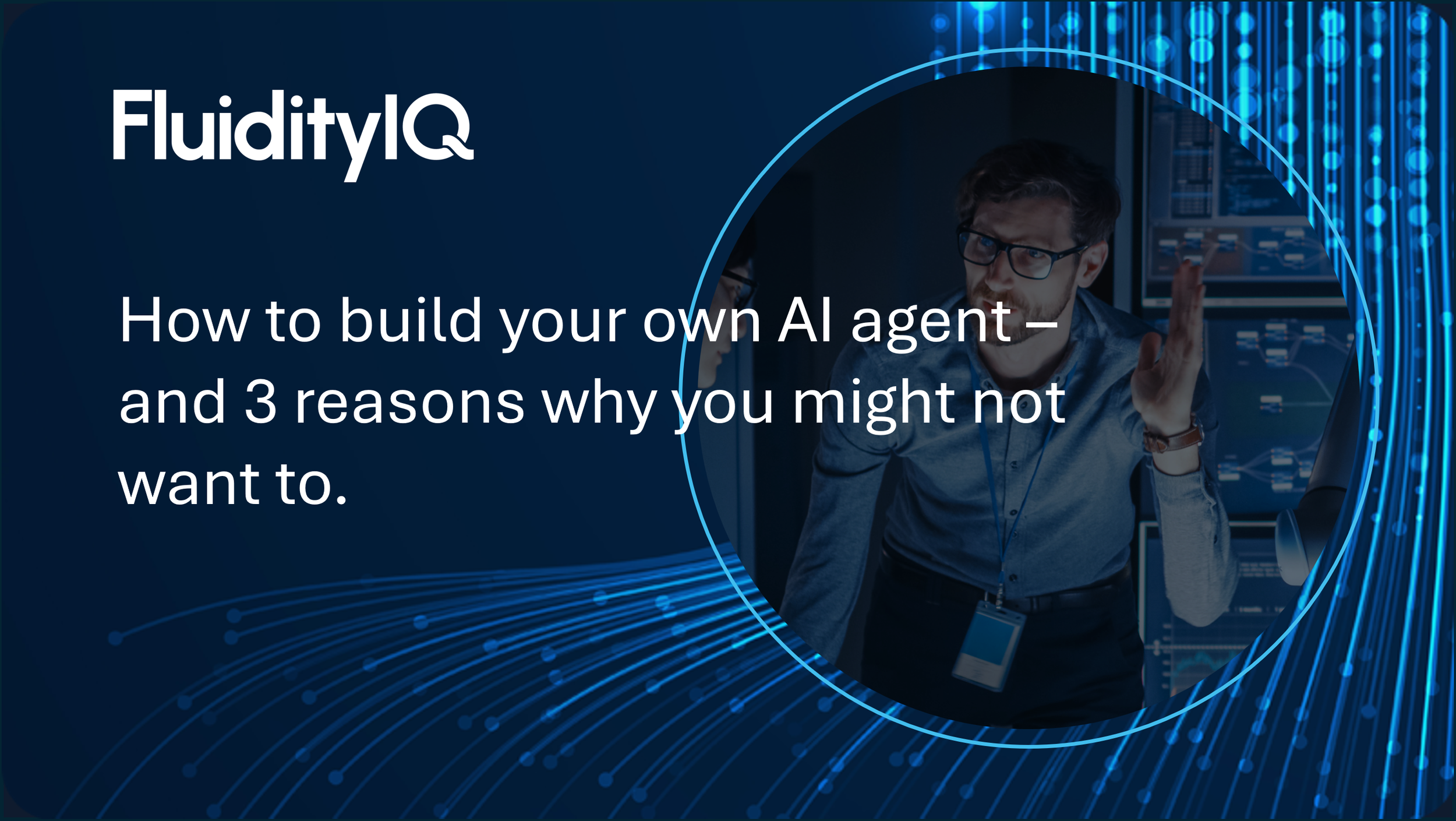How to build your own AI agent - and 3 reasons why you might not want to
AI agents are everywhere right now - writing code, answering questions, summarizing research, even automating full workflows. It’s no surprise that - with the release of our new Deep Research Agent - we’ve been hearing from a lot of people who are exploring how to make agents work for them.
The problem is almost everyone we talk to is stuck on the question - how? Everything you read pulls you in a different direction. Do I stick with existing tools with bolt on solutions? Consider new entrants with exciting features and modern interfaces? Or - can I build this myself?
This last question is one we are hearing more and more. And - the honest answer is: sometimes, yes.
If you have the time, the expertise, and the appetite for iteration, building your own AI agent can give you total control and the freedom to experiment. But that freedom comes with tradeoffs - in infrastructure, in ongoing maintenance, and in the resources required to keep things running smoothly.
This post isn’t meant to dissuade anyone from building. In fact, we’ll walk through exactly what it takes to do it - step by step - so you can make an informed decision. Because for some, building is the right move. For others, it makes more sense to leverage a proven platform and focus your energy on applying insight, not managing complexity.
Let’s break it down.
How to Create Your Own AI Agent
1. Choose a Platform
AI giants like OpenAI, Google, and Microsoft offer tools for building agents with hosted infrastructure and relatively intuitive interfaces — all within their own ecosystems.
If you prefer flexibility, frameworks like LangChain and LlamaIndex allow you to mix and match components across environments. These are great for developers who want to experiment or need platform-agnostic control.
2. Identify and Connect the Right Tools (Or Build Your Own Data Layer)
An AI agent is only as good as the tools and data it can access. Let’s say you’re building a prior art search agent. You’ll need to determine:
Where will it get prior art data?
What APIs or data sources are available?
Major patent offices like the USPTO and EPO offer APIs for searching their databases. The problem is, most public patent APIs rely on keyword search, which can miss nuance. Newer techniques such as vector search and knowledge graphs enable semantic understanding - helping your agent reason about meaning, not just match words.
To get there, you’ll need to:
Stand up a vector database like Milvus or FAISS
Choose or fine-tune embedding models
Acquire complete datasets from relevant jurisdictions
Clean and preprocess your data for indexing
This can be rewarding but also resource-intensive in setup and in ongoing data management - but most importantly - expensive in data acquisition and processing cost.
Essentially - this is another build vs buy decision. One “middle ground” option - providers like FluidityIQ offer tools such as MCPs, hosted agents, and APIs specifically designed for integrating into your agent workflows.
3. Create the Right Context
Even the best model struggles without context.
You’ll need a secure, structured way to share your internal data and domain insight with your agent. That might involve a retrieval pipeline, a document store, or a way to dynamically build prompts based on current data.
This is where “build” projects often bog down - it’s not the AI itself, but how it’s connected to your unique knowledge.
4. Build the Workflow
This is the orchestration layer - how your agent actually does work.
You’ll define workflows (or “chains”) that guide the agent through multi-step reasoning: searching, analyzing, summarizing, and verifying. Tools like LangGraph or CrewAI help manage these steps, but you’ll need to handle prompt logic, error recovery, and evaluation manually.
6. Maintain and Evaluate
Once live, you’ll need to regularly test and evaluate your agent.
Model updates can change behavior or cost profiles overnight. Providers deprecate APIs. Performance drifts. Without a structured evaluation process - automated tests, benchmarking, and monitoring - your once-reliable system can degrade quietly over time.
3 Reasons Why You Might Choose Not To
1. Ongoing Maintenance Is Real Work
Building is the easy part. Maintaining it is the challenge. You’ll need to:
Re-test every model update
Update system prompts as APIs evolve
Replace deprecated tools or endpoints
If you don’t have a dedicated owner for that work, your “custom” agent won’t stay reliable for long.
2. Free Tools Come with Tradeoffs
Open-source frameworks are fantastic for experimentation, but production environments require consistency and quality. You may find yourself trading off:
Data depth and quality
Monitoring and support
Speed and scalability
For anything mission-critical - especially IP research - those compromises can introduce risk.
3. The True Cost Can Surprise You
Yes, you can build it yourself. But at what cost?
Engineering time, infrastructure, data licensing, and model management all add up. For defined workflows like prior art search, specialized providers such as FluidityIQ deliver proven systems at a fraction of that cost - because the hard parts are already solved and scaled.
Finding the Right Balance
There’s no one-size-fits-all answer to the build-vs-buy question. For some organizations, building their own AI agent makes perfect sense. For others, it’s a costly distraction from their core work.
The right path depends on your team’s capabilities, your tolerance for maintenance, and how much you value flexibility versus reliability.
At FluidityIQ, we’ve spent years navigating that exact balance - deciding what to build ourselves and what to streamline through automation. That experience shaped how we designed our platform:
Flexible enough for teams who want to experiment and extend.
Powerful enough for those who want ready-to-run solutions that just work.
Whether you want to build, buy, or blend both approaches, we’re here to help you make that decision confidently.
If you’d like to talk through what makes sense for your organization, we’d love to connect.

